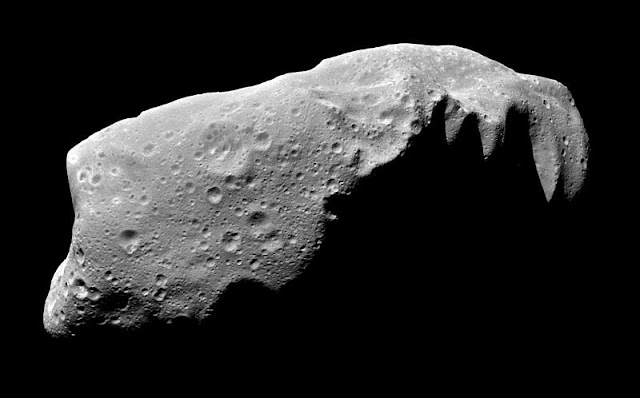Behold the Asteroid
This year has been mostly been in the news due to reasons which were more on the negative side. Out of the many reasons why the year has been a test to humanity, one is the continual passing of asteroids. Although most of them passed the Earth at a far-off distance, Earth had a close shave with some of these asteroids. But a large section of the population is not very familiar with what an asteroid is and how does it matter to us, Earthlings. Not all asteroids are to be feared. Asteroids are rich in rare minerals, which if mined & extracted could fetch multi-quadrillions in currency value back here on Earth. So let's go ahead and find out more about our love-hate relation with asteroids.
 |
| There are innumerable asteroids in our Solar System orbiting the Sun. |
The Rock of the Space
Importance of locating Asteroid
Interesting Facts about Asteroids
The size of asteroids varies from the size of a speck of dust to the size of 945 kilometres (587 miles) in diameter! This is the dwarf planet Ceres – the largest discovered asteroid in the solar system.
Most of the asteroids orbit the Sun between the orbit of Mars and Jupiter. This area is called the asteroid belt.
Some of the larger asteroids can also be referred to as planetoids and minor planets. Ceres is the only dwarf planet to still keep its asteroid label.Asteroids are grouped into categories based on their composition – what the asteroids are made from.
C-types, called chondrites, are made of clay and silicate rocks. These are by far the most common type of asteroid. These orbit furthest away from the Sun, mostly in the outer belt, so they have not been altered by the Sun’s heat.
S-types, known as siliceous asteroids, are the stony asteroids made up of silicate rocks and nickel-iron mixtures. These are found mostly in the inner Asteroid belt.
M-types are the metallic asteroids. These are mostly made up of nickel-iron.
It is thought that asteroids are the leftover debris from the formation of the inner planets.
The asteroids are irregularly shaped. This is due to their smaller size and small gravitational field. Objects with a large mass carry a large gravitational field. This gravitational force pulls inwards, bringing the larger objects (such as the planets and moons) into a mostly spherical shape. Asteroids lack the ability to do this as their gravity is low and just enough to hold the materials together, but not enough to make this round shape.
The most famous asteroids are dwarf planet Ceres, Pallas – a huge 544-kilometre asteroid and Vesta – a very bright large object. These are all asteroids but also referred to as minor planets. Astronomers have been aware of them since the early 1800s.
There is a very small chance of an asteroid colliding with our planet. Earth and other planets in the solar system were created through the process of objects crashing into one another to form larger worlds. These collisions are still happening, but luckily most of the larger items are gone, now making up parts of the planets we know. Luckily smaller objects would be destroyed by the Earth’s atmosphere if they orbited close to our home planet. Just in case there are many astronomers keeping an eye on the positions of any asteroids nearing Earth. These people map out the orbit path of these objects and can predict impacts well in advance.
An asteroid colliding with Earth roughly 66 million years ago is thought to be one of the main factors bringing the dinosaurs to extinction.
Roughly once every 2000 years and object about the size of a football field collides with Earth. The asteroid that hit Earth 65 million years ago would have been much much larger than this!
If you grouped all of the known asteroids, their mass would still be smaller than that of our Moon.






Comments
Post a Comment